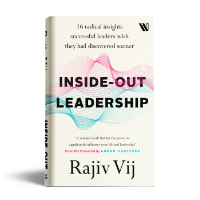
Photo by AlicePopkorn
In continuation of my last two posts on meditation, here’s the final one focused on mindfulness. Mindfulness meditations relate to the practice of being present and becoming aware of true nature of things – our own real identity and that of the world around us. While there are any number of specific approaches connected with mindfulness, they can largely be categorized as Concentration meditation and Mindfulness meditation.
The Concentration meditation techniques require focusing single-mindedly on an object, a mantra, or often the breath. Concentrating in this way stills the mind and sharpens its focus, facilitating a deeper clarity and fresh awareness to emerge. Further, staying close with the rhythmic nature of the breathing process has a calming effect on the mind. Breath is always in the present, we are only breathing the current breath never the last or the next one. Thus, focusing our attention on the breath helps us be in the present, without getting caught up in the drama of the past or the future. This not only relaxes our body and mind, it also creates space for new awareness to appear. As we recognize the depth and potential of the present moment, the empowering nature of that feeling enhances our inner strength. Breath is also the connection between our body, mind and the universe and observing it provides us new insights into the connection between our mental and physical states. The moment to moment profile of the breath can be a great reflection of our shifting mental states – when we are angry, anxious, or agitated, the breath becomes quicker, shallower and inconsistent; when we are calm and relaxed, the breath becomes slower, deeper and more consistent. Observing the breath thus automatically brings us in closer touch with our inner states of mind. Lastly, practicing this technique over time can significantly raise the level of our concentration in any given moment, resulting in greater focus and productivity in whatever we maybe engaged in.
Mindfulness meditation is directed towards becoming more aware of our true identity. It is about nurturing an ability to being a witness to whatever comes up – leading to a state of great acceptance, insight and equanimity. The practice requires sitting down in a quiet place and observing our thoughts, feelings or sensations. The key is to observe the thoughts (or feelings or sensations) without judging them or getting attached to them. Observing the thoughts is focused less on the thoughts and more on the thinking process; it’s about witnessing their ephemeral nature and examining how they incessantly arise and pass away. Observing our thoughts in a detached way, like an independent scientist doing research on them, makes us realize that the thoughts and feelings are nothing but passing packets of energy that don’t have any power to grow unless we pay attention to them. This cultivates a unique non-reactive state within us and sustaining that through a larger part of the day can lead to our identifying much less with each of our thoughts – whether of fear and worry or of greed and craving. This does not mean we become devoid of emotions or feelings; instead, we become better equipped to feel the entire spectrum of emotions but with a new awareness of not necessarily favoring one over the other. Such mindfulness makes us feel more abundant, whole, calm and joyful. It also brings us closer to the realization of our true identity of pure awareness, which merely observes and reflects all experiences with an honest mirror-like neutrality. Advancing in this practice helps shine further light on true nature of things by assisting the recognition that there is no independent me, only an ever evolving awareness.
Buddhist meditation practice of Vipassana takes this understanding a level deeper. Here the focus is on observing the sensations. Based on Buddha’s experiences, the teaching suggests how the deepest source of our motivations is not the thoughts and feelings, but the sensations, and how observing them, without identifying with them, can slowly bring us out of the human suffering. It stresses that as our senses interact with the environment, they produce several sensations in our body. These sensations are quickly judged by the mind as pleasant or unpleasant and driven by its conditioned responses (stored karma), the mind craves for more pleasant sensations and wants to get rid of the unpleasant ones – thereby also continuing to generate new karma. This bi-polar evaluation of every situation is the real cause of human suffering. We can spend an inordinate proportion of life’s time in craving for things we don’t have and fearing to lose what we have. Such a bipolar version of life is flawed as it assumes that one of these states is preferable over the other and that somehow it maybe possible for us to create circumstances in our life for only one of them to prevail. The process of deeply observing our sensations, accompanied by letting go of their constant evaluation, slowly trains our mind to recognize that everything is impermanent and hence there’s no point getting attached to any pleasant sensations as it is futile to becoming averse to painful experiences. It teaches us how pleasure and pain are nothing but our reactions to these passing sensations. With practice, mindfully observing even our most painful sensations, without reacting to them, can help them subside. When we resist them, we feel frustrated (with the situation) and/or guilty (of our past actions) – which in turn lead to further distortions in our emotional make-up and generation of new karma in our psyche. Cultivating equanimity, and accepting the current reality as is, not only strengthens our character, but also provides a deep sense of calm and happiness in our life.
As Thich Nhat Hanh said, “There is no enlightenment outside of daily life.” As the name suggests, all mindfulness meditations are an invitation to be more mindful of our true identity and of our present reality at all times. For example, the breath is always with us and we can always go back to observing it at any time during the day. When we are more aware, we think and behave from a very different level of consciousness. The greatest relevance of this practice is in being more mindful in every aspect of our daily life – eating mindfully, walking mindfully, working mindfully, and conversing mindfully and so on. What this requires is being fully present in whatever we are doing and letting go of our mind’s multiple agendas. Highlighting its relevance to relationships, Thich Nhat Hanh commented, “The most precious gift we can offer others is our presence. When mindfulness embraces those we love, they will bloom like flowers.” When we lead a life governed by these practices, it equips our minds to both capture the details (through concentration) as well as be aware of the big picture (through mindfulness) in all situations. It is akin to listening to an orchestra and being able to soak in both the melody of an individual clarinet and the harmony of the entire symphony in equal measure. While the primary objective of these meditation techniques is to learn about our true self, mindfulness undoubtedly also helps reduce mental stress and physical pain. Needless to add, pursuing these practices can be challenging and requires significant commitment. Try closing your eyes for 2 minutes and just observe your thoughts without getting attached to them! As they say, mastering any creative craft takes a practice of at least 10,000 hours – sounds like meditation is no exception to that. Committing to meditating regularly, irrespective of our circumstances, is a real test of patience. As St. Francis de Sales said about undertaking this journey, “What we need is a cup of understanding, a barrel of love, and an ocean of patience.”
Related Search Terms:
mindfulness meditation /what is mindfulness /the miracle of mindfulness /mindfulness techniques /how to do mindfulness meditation











 Thriving In An Alternate Second Career
Thriving In An Alternate Second Career ALIGNED: 7 Happiness Mantras I Wish I Could Follow
ALIGNED: 7 Happiness Mantras I Wish I Could Follow Obsessed With Self-Improvement? Try Self-Acceptance
Obsessed With Self-Improvement? Try Self-Acceptance The Most Fascinating Movie of Our Lives!
The Most Fascinating Movie of Our Lives!
Hi rajiv,
First i thank for presenting the idea and difference between concentration and mindfulness meditation. This article is great in giving valuable insight of artfully living a detached life like water on lotus flower. The article wonderfully conveys the idea of destroying karma or getting liberation. I want to add a point of getting the desired goal of being observer or detached or destroying karma through the teaching of sri rama krishna. As sri rma krishna says if a person has the attitude of himself considering as machine and god as doer or surrendering every thing at the lotus feet of god (bhagvadgita says this) then a man can get liberated and detached and thus attains liberation aby destroying karma. I request you to correct me if i am wrong in my observation.
Hi Raj Pal:
Hinduism does talk of four paths to liberation –
Jnana Yoga (the way of knowledge), Bhato Yoga (the way of love and devotion), Karma Yoga (the way of action and work) and Raja Yoga (the way of meditation). Different individuals may choose or maybe drawn towards any one or a combination of these paths.